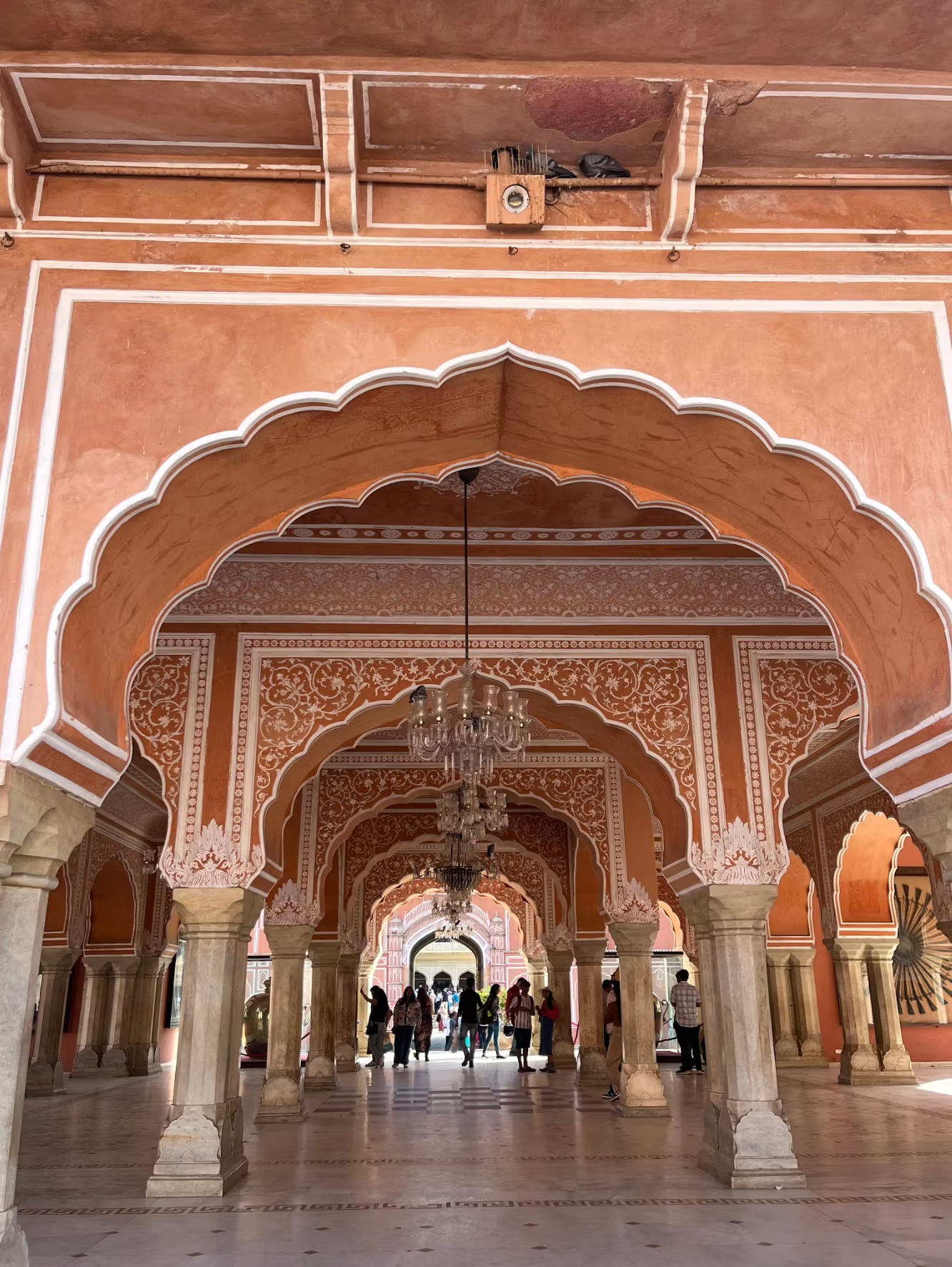
City Palace. Image courtesy of Mehr Singh.
The road out of Jaipur is not like the road in: As I drive past oyster-pink fortresses, the Indian city unfolds in a familiar series of tableaux. Women in neon saris weave through traffic on motorbikes, girdled by the heavy scent of jasmine and frying ghee, the clang of a jeweler tapping at uncut stones.
I’m not particularly hungry. Still, I abandon the egg salad sandwich I had packed and make an impromptu stop at Shree Ram Namkeen Bhandar, one of the oldest kachori shops in Jaipur. Two men sit cross-legged, folding a lentil filling into dough before dropping the savory pastries into hot oil. The kachoris emerge golden, blistered, fragrant. One at a time, the pastries are placed into bowls made of peepal leaves and crushed before being drowned in a kadhi, or spicy yogurt broth. A school bell rings nearby, and a swarm of toddlers in matching uniforms spill out, backpacks bouncing, pigtails neatly slicked and swinging.
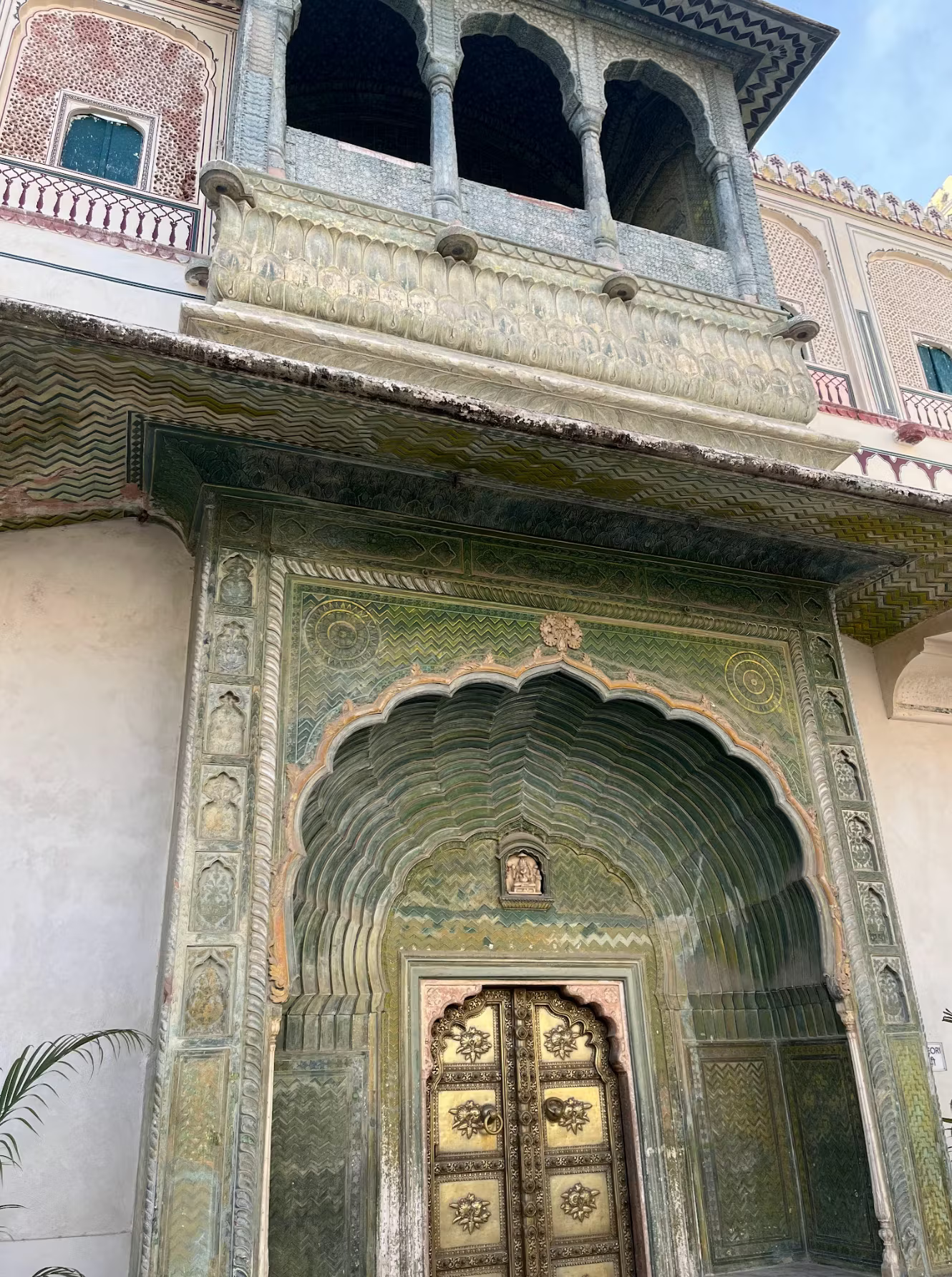
City Palace. Image courtesy of Mehr Singh.
As I arrive just beyond the city’s edge, past the last streaks of roadside commerce, a practiced stillness takes over and copper-hued domes come into view, signaling that you are now elsewhere. The Oberoi Rajvilas, a sandstone sanctuary molded after the city's ancient forts, rises from this silence. I walk across the hotel’s moringa-perfumed courtyard before a greeter showers me with rose petals and places a tika on my forehead, a mark of honor. An ostentation of peacocks scurries past, flashing their iridescent plumage. At my room, I am greeted with an arrangement of flower petals spelling out “Welcome.” Before I notice it, a staff member, anticipating my thirst, brings over watermelon juice.
After lunch, I make my way to the City Palace, where the royal family still resides. It is a relic of old Jaipur, one of labyrinthine gardens, pastel frescos, and Rajput armor. A flag flying at half-mast denotes a new Jaipur: My guide explains that it signals that 26-year-old Maharaja Sawai Padmanabh “Pacho” Singh, is away. Though the Indian parliament no longer recognizes royalty, Singh—part boy-king, part billionaire, and captain of the Indian polo team—is adored not like a politician or celebrity, but with the reverence of one with divine right.

Oberoi Rajvilas. Image courtesy of Mehr Singh.
The new Jaipur Centre for the Arts, set within the palace, is Singh’s latest project, a balancing act of highlighting Indian artists and exhibiting international modern art. Inside, walls of photographs depict documents wrapped in cloth, the traditional method of preserving sacred texts in India. Dayanita Singh’s (no relation) 2016 “Time Measures” series is a commentary on the passage of time. The cloth grows progressively redder until I spot a crimson bundle at the wall’s edge.
On an adjacent wall, Hiroshi Sugimoto’s Theatres, 1978, transports viewers to New York’s Beekman Theatre with black-and-white photographs—wide-aperture shots of effulgent light, a confronting blank screen. I think of my apartment back in New York, wondering if I’ll face issues reentering the country I still can’t call home after nearly a decade.
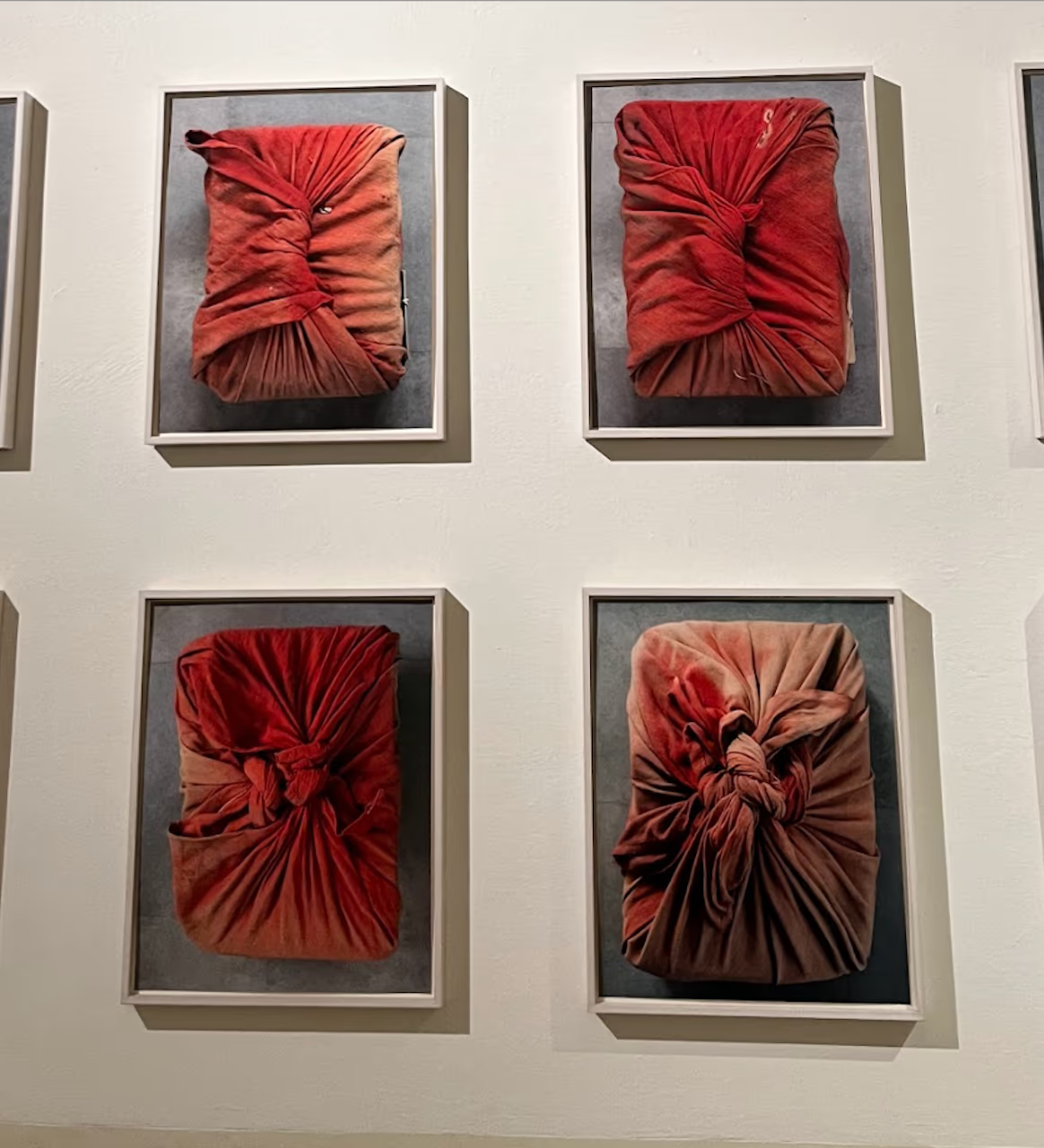
Dayanita Singh, "Times Measures," 2016. Image courtesy of Mehr Singh.
Outside, near the Johri Bazaar neighborhood, a tribe of monkeys cross telephone lines and pull me out of my brief melancholy. The diamond merchants work in concentration, sorting gems under the flickering of bare bulbs. There is a rhythm to it, a patience that suggests the work is not just business but an intimate craft etched into reflex. They are artists, too.
As the sun begins to set, the peacocks’ song harmonizes with temple bells. A priest’s chants reverberate through a 300-year-old Shiva temple on the hotel grounds, its white stone gleaming at dusk. I enter the building and a sudden, jagged ascent of concrete splits my thoughts in two: I think of New York, the city I’ve lived in for nearly a decade, and I wordlessly cast my hopes of remaining there toward an effigy of Lord Shiva, as if he might listen. After a brief service, the priest ties a mauli, a sacred thread, around my wrist and prays for me, and something deep down tells me he means it.
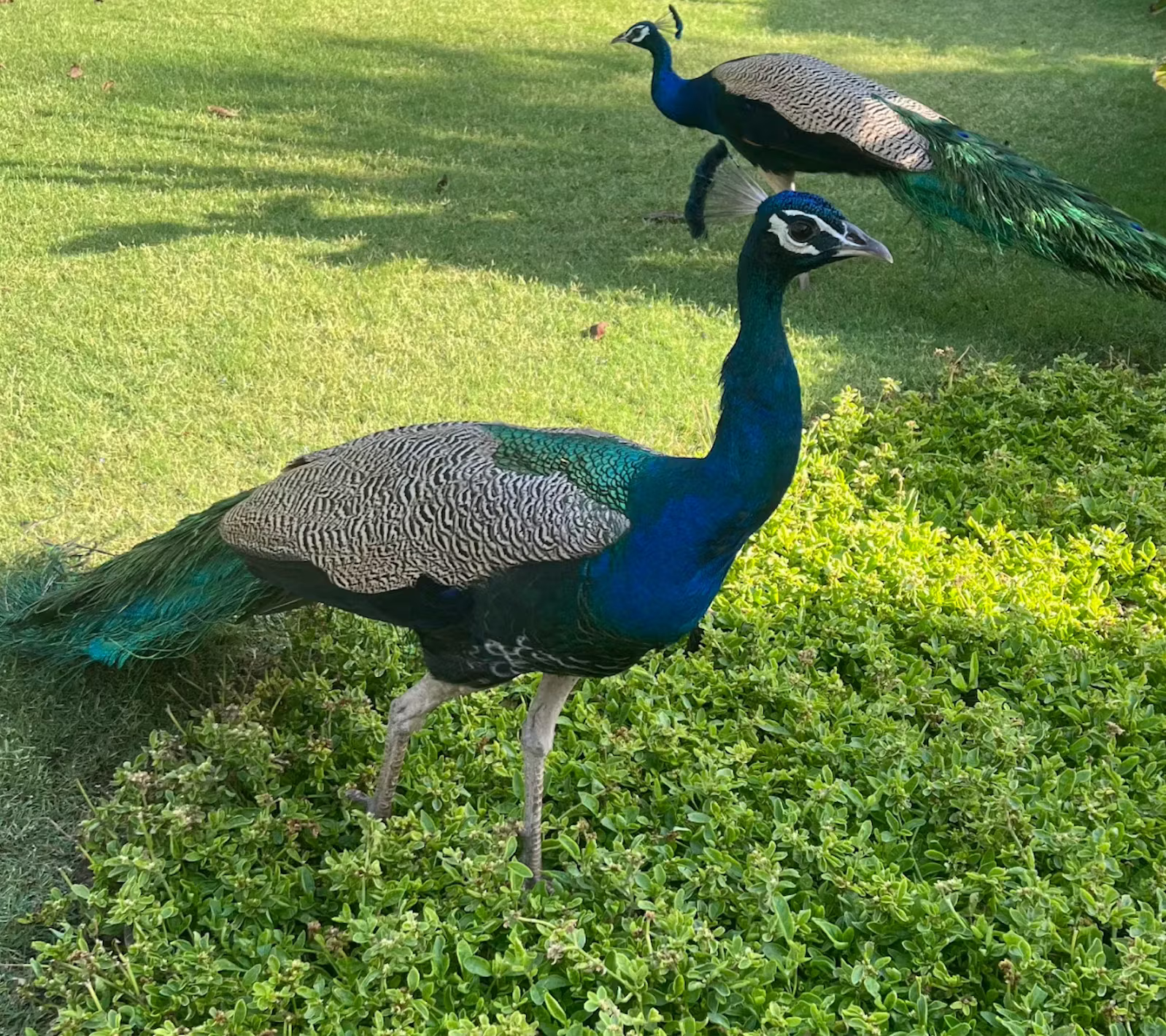
Image courtesy of the Mehr Singh.
As a food writer, meals have always been my way of understanding cities and my place in them. I thought I knew the Rajasthani thali of my childhood—the traditional platter of vibrant dishes in small bowls that comes in a flood of options, where variety is taken for extravagance. But as I sit down for dinner at the Rajmahal, I come to see that it’s more than that. Each dish takes a labor of hours, only for a guest to take a bite or two. Unlike a prix fixe, where the chef’s ego often takes center stage, here the meal is designed for the diner’s experience, endlessly customizable and open to substitutions.
The Rajasthani thali arrives in a slow procession, a near-dozen silver dishes glinting under candlelight. It includes smoky dal, nutty saffron-stained paneer, baati (a shortbread-like roll that crumbles under the weight of ghee), churma (a sweet-savory crumble), a tangy tomato sabzi, and thumbprinted khoba rotis. The laal maas, a fiery Rajasthani mutton curry, is tempered by yogurt raita. Chef Chinmaya weaves my writing into the meal itself: In what appears to be a nod to the piece I wrote on tandoori chicken as a Thanksgiving centerpiece for families within the South Asian diaspora, he carves into khad murgh, a whole chicken wrapped in wheat dough and baked in sand.
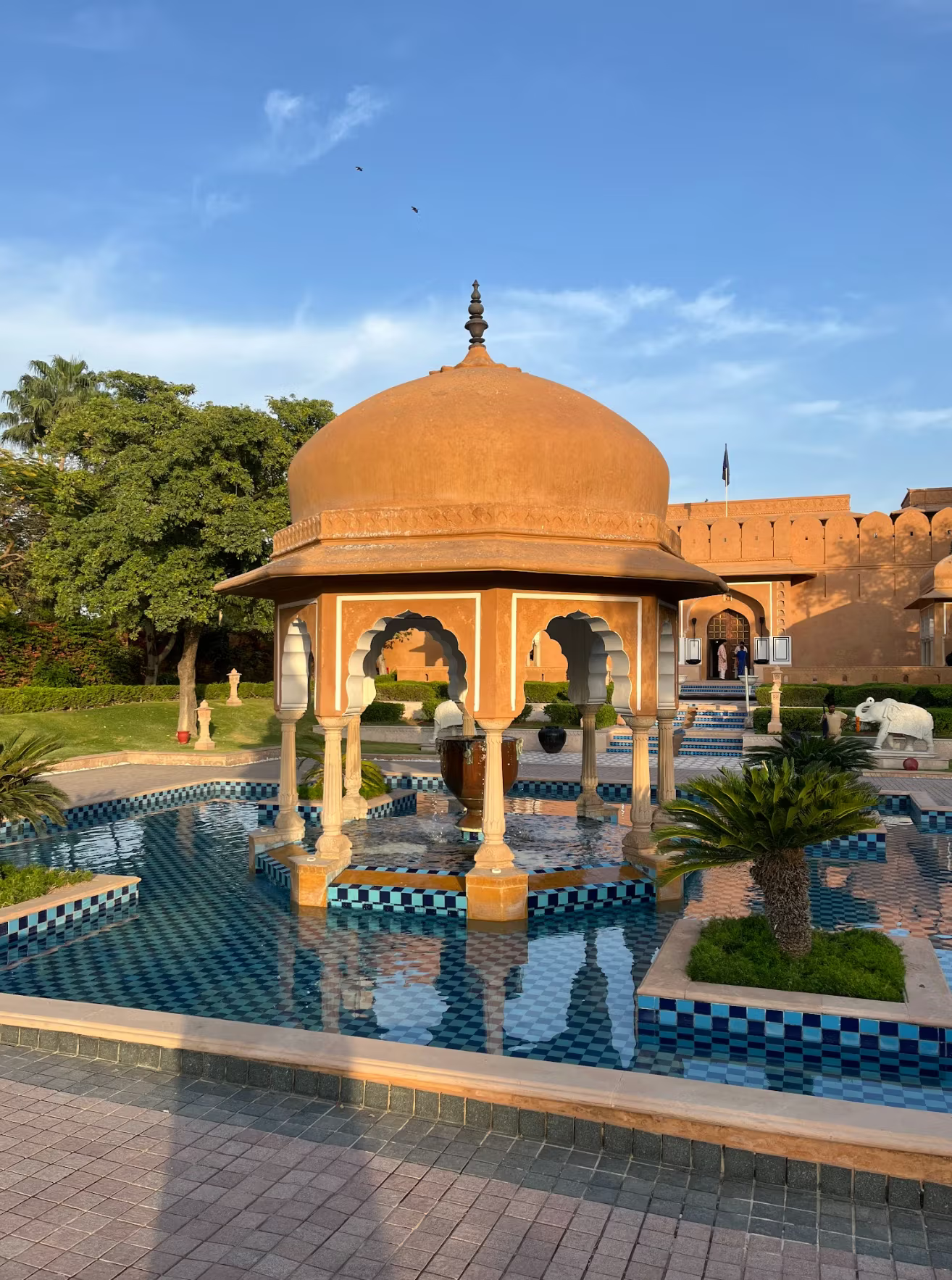
Oberoi Rajvilas. Image courtesy of Mehr Singh.
Everything tastes deliberate, bound to something older than the sandstone walls. For a moment, I decide it would be okay if I never return to the cold, wide country where I’ve never tasted anything close to this. I dine under the stars as musicians sing Hindi songs, the notes curling into the warm air. A server pours rose milk over my hands to cleanse them.
Kafka wrote that consideration is the highest form of love. A Sanskrit adage takes this credo further: Atithi devo bhava (“The guest is a god”). Nowhere is this more evident than in Jaipur, where I, a faux god in Uniqlo sweats, feel like a cherished presence, tended to with a devotion that dissolves anxiety. The next morning, as I drive off, the hotel staff holds up signs spelling out, “We Will Miss You.” This is India as it always has been: layered, unhurried, generous. It’s the kind of luxury that has little to do with money, one that photoshoots and coffee table books can’t quite capture.
Fifteen years have passed since I last saw the city, a four-hour drive from my hometown of Delhi. I thought I knew it—the rose-tinted streets, the rhythm of ghoomar, the hush of old wealth. But as I make my way towards the Delhi-Jaipur Expressway, I come to realize that the city hasn’t simply changed; it has sharpened, holding fast to its past while quietly slipping into something new. It has the quiet confidence of a place that isn’t in a hurry to define itself, offering a kind of ease that isn’t about grand gestures but a slow unfolding. Perhaps, I think, this is what home feels like: not a place or a time, but rather the simple knowledge that you’re always allowed to return, no questions asked. The peacocks stand at the hotel gates and, silent for just a moment, seem to understand.












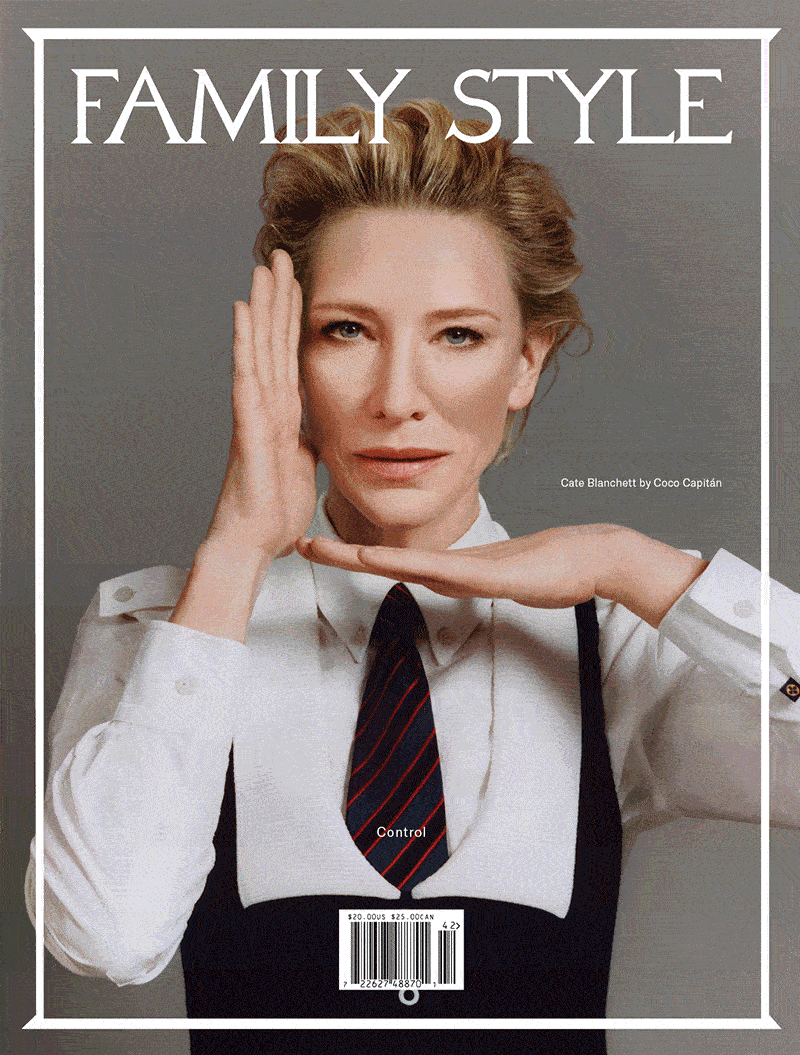


.avif)

